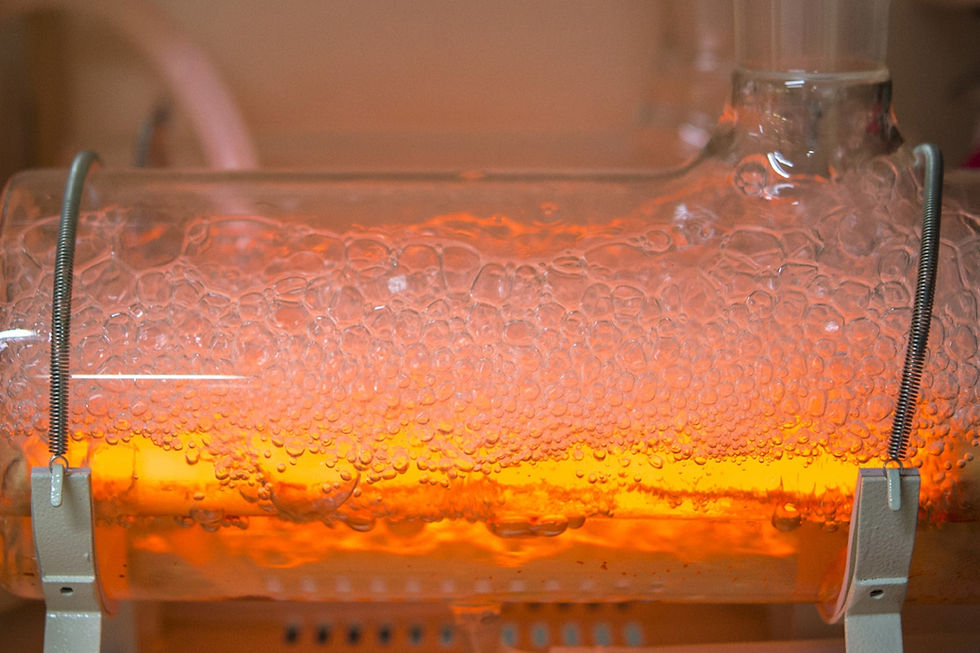Quantum Graphite JV gains key rights to grid energy storage battery
- Matt Birney

- May 9, 2023
- 3 min read
Updated: Apr 3, 2024

Quantum Graphite’s half-owned joint venture (JV) company has gained original equipment-manufacture (OEM) intellectual property rights to Sunlands Co.’s thermal energy storage (TES) battery cell being aimed at revolutionising the grid-connected energy storage market.
The company says the new JV company’s name will be changed from Quantum Sunlands Partnership to Sunlands Power.
Effective from July 1, Sunlands Power – which will be half-owned by Quantum – will have the OEM rights to manufacture Sunlands Co.’s long-duration energy storage (LDES) TES graphite cells. The OEM rights cover the use of flake graphite from both Quantum’s mines and other sources. Previously-granted rights allowed the manufacture of graphite flake-based energy storage media using feedstock from Quantum’s proposed Uley 2 mine.
Quantum says Sunlands Power is now positioned to be a strategic full participant in the lucrative global LDES market. It will be directly responsible for the manufacture and delivery to Sunlands Co. of the complete long-duration TES graphite cell facility. The facility will have all of the associated plant and equipment required for the connection to conventional thermal power plants – for example, steam turbine generator packages.
Quantum’s projected financial returns from Sunlands Power are anticipated to be a significant addition to the returns delivered from its Uley 2 Project. The company says, based on current market prices, the combined manufacture and sale of the flake storage media and the TES graphite cell facilities will generate revenues far more than those derived from the sale of Uley 2 graphite flakes to Sunlands Power.
Management will update expected financial returns from its Sunlands Power interest when it has completed the recently-designed TES graphite cell pilot plant, at a time when global LDES demand is projected to rise rapidly during the next decade.
LDES systems store energy from predominately renewable sources for periods of greater than 12 hours and up to several days and deliver energy to grid networks when renewable power generation is not possible. LDES underpins the decarbonisation of grid-based energy delivery.
TES systems store energy as heat typically created by renewable electricity generation. The Long Duration Energy Storage Council says TES-based LDES solutions are a more cost-efficient decarbonisation and electrification solution than carbon capture and storage at existing coal-fired power stations, or replacing gas with hydrogen or biomass.
Quantum believes Sunlands Power will deliver a financial return within the first year of achieving its minimum production capacity of 0.5GW of TES graphite cells. Capital required to establish Sunlands Power’s operation is being sought through sustainably-linked bond financing.
The critical supply of the flake graphite-based energy storage media was the key step in building an end to end supply chain. The grant of OEM rights to Sunlands Power now underpins the Company’s participation in the biggest market associated with the grid connected energy markets. Quantum Graphite director Michael Wyer
The company says its key market for Sunlands Power’s TES graphite cells is related to the retrofitting of coal-fired power stations. Storing energy from renewables in the form of heat, TES graphite cells can retain that heat for weeks at a time and deliver it to pre-existing coal boilers to generate steam.
Quantum says the high operating temperature of TES graphite cells ensures the reliable and consistent production of the high-temperature steam that drives the utility-scale turbines found at large grid-scale coal-fired power stations.
The ability to control the entire value chain from graphite-flake mining to the manufacture of TES graphite cells for LDES systems in coal-fired power stations gives Quantum a unique position in the grid-connected renewable energy market. The demand for LDES is growing fast, providing the company with what looks to be a bright future.
Is your ASX-listed company doing something interesting? Contact: office@bullsnbears.com.au


